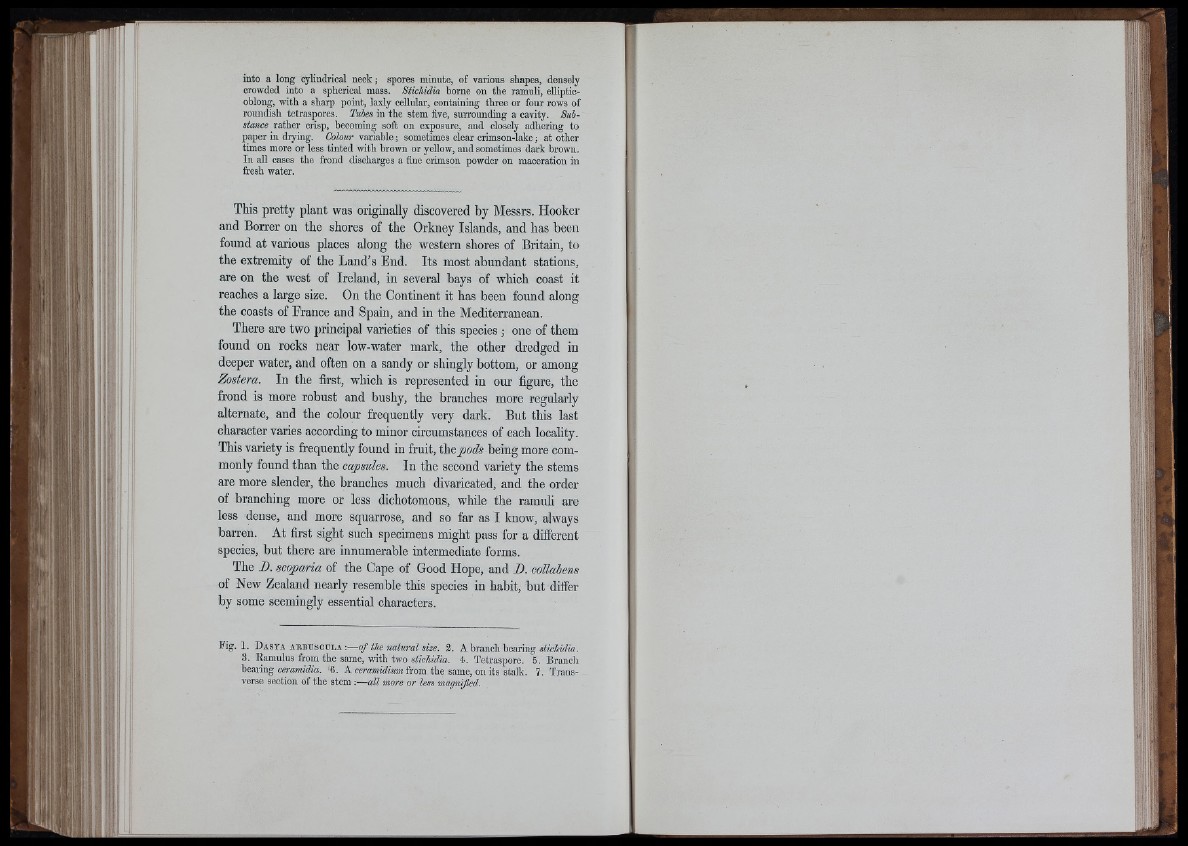
k ^ 7
lîfo''
' ’-Îi U
i .... y
I i l
l . i > i" I
;■ I ,
to, J ri
into a long cylindrical neck ; spores minute, of varions shapes, densely
crowded into a spherical mass. Stichidia borne on the ramnli, eUiptic-
oblong, with a sharp point, laxly cellular, containing three or four rows of
roundish tetraspores. Tubes in the stem five, surrounding a cavity. Substance
rather crisp, becoming soft on exposure, and closely adhering to
paper in drying. Colour variable ; sometimes clear crimson-lake ; at other
times more or less tinted with brown or yellow, and sometimes dark brown.
In all cases the frond discharges a fine crimson powder on maceration in
fresh water.
This pretty plant was originally discovered by Messrs. Hooker
and Borrer on the shores of the Orkney Islands, and has been
found at various places along the western shores of Britain, to
the extremity of the Land’s End. Its most abundant stations,
are on the west of Ireland, in several bays of which coast it
reaches a large size. On the Continent it has been found along
the coasts of France and Spain, and in the Mediterranean.
There are two principal varieties of this species ; one of them
found on rocks near low-water mark, the other dredged in
deeper water, and often on a sandy or shingly bottom, or among
Zostera. In the first, which is represented in our figure, the
frond is more robust and busby, the branches more regularly
alternate, and the colour frequently very dark. But this last
character varies according to minor circumstances of each locality.
This variety is frequently found in fruit, \hepods being more commonly
found than the capsules. In the second variety the stems
are more slender, the branches much divaricated, and the order
of branching more or less dichotomous, while the ramuli are
less dense, and more squarrose, and so far as I know, always
barren. At first sight such specimens might pass for a diiferent
species, but there are innumerable intermediate forms.
The B. scoparia of the Cape of Good Hope, and B. collahens
of New Zealand nearly resemble this species in habit, but differ
by some seemingly essential characters.
Fig. 1. Dasya ARBUSCULA:—o f the natural size. 3. A brancli bearing «/¿c/iiV/*«.
3. Ramulus from the same, with two «¡fic/iiA'a. 4. Tetraspore. 5. Braiicli
hearing ceramidia. 6. A from the same, on its stalk. 7, Transverse
section of the stem:—all more or less magnified.
r i ?